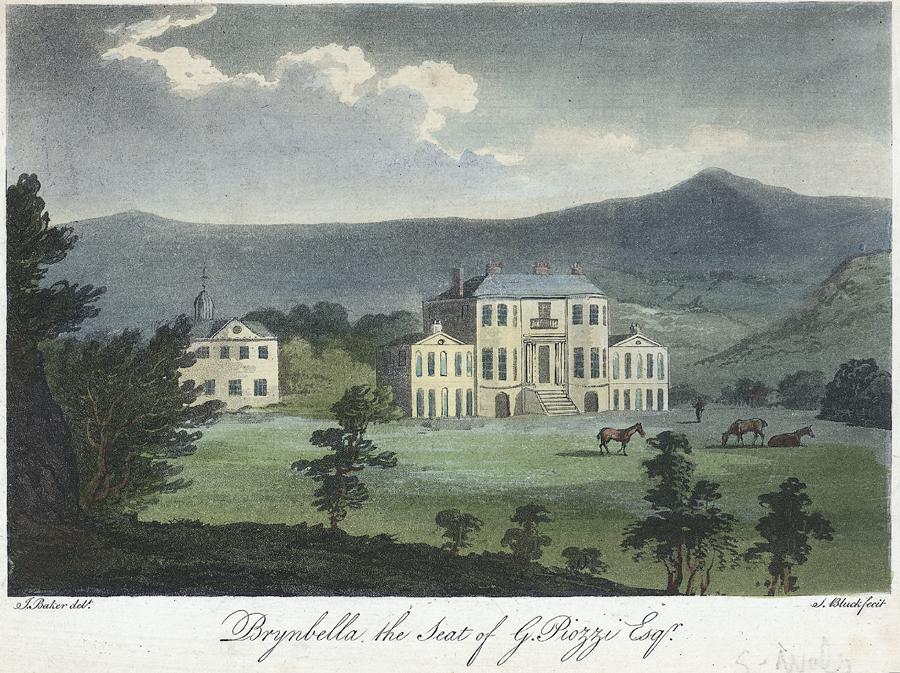Discover the Influence of Women in Welsh History
Four listed buildings with wall-to-wall memories of female empowerment
As Wales and the wider world celebrate International Women’s Day (8 March), at Cadw we have taken some time to reflect on the female figures behind our historical monuments.
Here are just four listed buildings which have played a part in the female history of Wales…
1. The newspaper HQ of Welsh Suffragette, Lady Rhondda
Margaret Haig Thomas, also known as Lady Rhondda (1883-1958), was a key member of the movement for women’s voting rights — and the owner of Cardiff newspaper, the Journal of Commerce.
The newspaper’s head office was at 10 Mill Lane in Cardiff city centre — which is now home to the Coconut Tree Sri Lankan restaurant. The late Victorian building was Grade II listed in 1999 in recognition of its status as a canal-side commercial property and its historical association with the most famous Suffragette from Wales.
As a business owner and a member of a wealthy industrial family, Lady Rhondda was able to make significant financial contributions to the fight for women’s equality in Wales — but she was an activist in her own right too and served time in prison for her Suffragette activities. She organised public meetings across south Wales, went on marches and even protested by jumping onto the running board of Prime Minister HH Asquith’s car.
In 2019 Lady Rhondda was on the shortlist of women to be commemorated by a statue outside Cardiff Central Station, though she lost out in the public vote to renowned Welsh educator and Wales’s first black head teacher, Betty Campbell (1934-2017) — who features in Cadw’s feminist history book, Welsh Women Making History.
Recognised as a Grade II listed building in: April 1999
2. The Women’s Land Army Hostel in Flintshire
The Women’s Land Army (WLA) was formed in 1939, following the outbreak of the Second World War and the subsequent need to increase domestic food production.
Members of the WLA were either billeted locally or provided with accommodation in schools, private buildings or purpose-built hostels — such as the now Grade II listed building in Sealand, which is an astonishingly rare example of its kind.
The now-abandoned hostel is classed as a ‘building at risk’ — but in its hey-day, it was a bustling hub of activity. Designed in July 1942 by architecture firm F Roberts of Mold, the building’s WLA residents worked tirelessly to keep Flintshire and wider Wales fed during the latter years of the war.
Recognised as a Grade II listed building in: February 2010
3. Brynbella — the home of Georgian writer, Hester Lynch Piozzi
Welsh-born author and heiress to the Bachygraig Estate, Hester Lynch Piozzi (1741-1821), published eight books during her lifetime — including her prose history of the world, Retrospection.
Published in 1801, it represented the first British female attempt to write a global history — and as such, it was widely attacked by those who felt that history was made by great men and only men could write it.
Hester is probably best remembered for her close friendship with (and biography of) Dr Samuel Johnson, author of the Dictionary of the English Language (1755). However, the friends fell-out after Hester (born Hester Lynch Salusbury and later known as Hester Thrale, during her years spent married to MP Henry Thrale) married her second husband, Gabriele Mario Piozzi — an Italian music teacher who Dr Johnson felt was below Hester’s social status.
Very much in love, Hester built a home for her to share with Gabriele — a stunning, three storey property nestled in the small village of Tremeirchion, Denbighshire. Named Brynbella — an Italian/Welsh hybrid word meaning “beautiful hill” — the home’s interiors are believed to have been designed by renowned decorative artist of the period, Michelangelo Pergolesi.
Now Grade II* listed by Cadw, the extensive property even boasts a recess for Piozzi’s chamber organ, with a chimneypiece featuring musical instrument decoration.
Recognised as a Grade II* listed building in: September 1951
© National Library of Wales, Public Domain, via Wikimedia Commons.
4. The remains of Llanover Estate — the home of a Welsh cultural icon
Augusta Hall, or Lady Llanover (1802-1896), is best known for her role in popularising the traditional Welsh ladies’ dress — but that wasn’t her only contribution to our national culture.
Born Augusta Waddington, she inherited the large Llanover estate in Monmouthshire, and married Benjamin Hall, after whom ‘Big Ben’ in London is named. She learnt Welsh as her second language and made her home at Llanover a centre for Welsh culture — using it as a base from which to sponsor Eisteddfodau; support poets and scholars; and publish books and journals in Welsh.
As a result, Augusta received ridicule from her peers. The Welsh and English nobility of the time saw the Welsh language and culture as a curse on the country — with the upper and lower classes of Wales divided by both language and religion.
The solution was more and more English-language education, as advocated by the ‘Blue Books’ in 1847 — and various other schemes designed to eradicate the presence of Welsh in Wales. In this climate, Lady Llanover was one of very few dissenting voices who helped preserve Welsh literary and cultural traditions through this difficult time.
Augusta’s role in preserving Wales’s now thriving language and national identity is undeniable — making the site of Llanover House, the centre of her activities, a very special place. Sadly, the property was demolished in 1935, and all that survives is a ruined stable block, a few other listed estate buildings and Llanover Park, which is a Registered Park and garden designated by Cadw.
Recognised as a Grade II listed building in: December 2005
